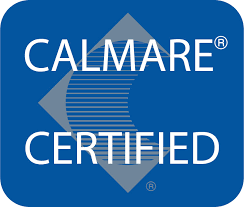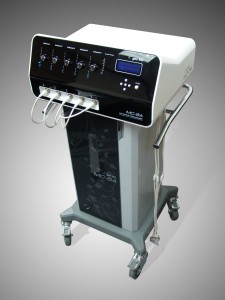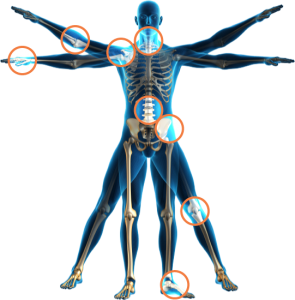Calmare Therapy in the Treatment of Chemotherapy-Induced Chronic Cancer Pain
 Cancer diagnostic tools and life-saving treatments are ever-evolving, improving, and changing.
Cancer diagnostic tools and life-saving treatments are ever-evolving, improving, and changing.
Technology and research have made it possible to diagnose and treat almost any type of cancer out there. Lives are being lengthened as a result.
The Price?
Though truly miraculous, these life-saving measures come with a price
that only those who have undergone treatment can fully comprehend.
Though their lives are being spared, many of them suffer from the after-effects of the very treatments that have prolonged their lives.
They are now living with chronic pain.
Though cancer warriors are grateful for the extension of life, the reality is, many of them now live a life where chronic pain is a constant companion, usually caused by nerve damage due to the many chemotherapy and radiation treatments they received.
What killed the “bad” cells, also damaged many “good” cells, including nerves.
This nerve damage causes dysfunction and pain of the peripheral nerves and is called “neuropathy”.
Thankfully, many have found relief with Calmare Pain Therapy Treatment.
How does the Calmare Pain Therapy Treatment work?
Calmare is a non-invasive treatment that involves the placement of surface electrodes on the areas of pain. 
A specific “no pain” signal is transmitted to the brain, the very same way pain travels, giving the brain the ability to re-write the neurosignature and thereby change the brain and nerve system, with regard to pain.
The Calmare Device
The Calmare device is a U.S. FDA 510(k)-cleared and European CE mark-certified pain therapy medical device for the non-invasive treatment of chronic neuropathic and oncologic (cancer) pain.
 It was named to honor its Italian inventors. Calmare, in Italian, means to “ease or soothe” and Calmare has been able to ease chronic pain for so many.
It was named to honor its Italian inventors. Calmare, in Italian, means to “ease or soothe” and Calmare has been able to ease chronic pain for so many.
Those who have experienced Calmare have found it to be very effective at soothing their chronic nerve pain. The neuropathy pain is reduced visit by visit, until maximum relief is achieved.
We have been 90% effective in seeing significant reduction in symptoms of neuropathy with Calmare at Dixie Chiropractic.
Method of Administration
Another benefit to Calmare is its method of administration.
It is a biophysical treatment, as opposed to biochemical, meaning
there is no risk of further damaging the body’s tissues, and no chance
of addiction (as there would be with pain med opioids).
No one wants to regain their life only to lose it again
to a drug addiction.
The Facts Of Drug-Addiction in UT
In 2014, 32% of Utah adults aged 18 years and older had been prescribed an opioid pain medication in the last 12 months.
Most Utahns who die from a drug-related death suffer from
chronic pain and take prescribed medications.
Prescription opioids can be addictive and very dangerous. Misuse of
these medications can lead to serious legal and personal consequences, including death.
Every month in Utah, 23 individuals die from prescription drug overdoses.
Utah has experienced a nearly 400% increase in deaths from the misuse and abuse of prescription drugs, and Utah is ranked 4th in the nation in accidental death due to drug overdoses. (1)
There is no risk of addiction with Calmare, because of its method of administration. As mentioned, it’s a physical, rather than chemical delivery.
There is Hope!
Besides treating pain as a result of chemo, Calmare also works well
for those who have pain caused by cancer itself.
For these people, the day-to-day pain can be constant and unrelenting. Many people struggle to find ways to relieve their daily pain without turning to pills.
Calmare offers a solution.
Those who are fighting cancer or who have won their battle want nothing more than to live a long, full, active life. They don’t want chronic pain to prevent them from experiencing all life has to offer.
Calmare can give them this opportunity.
Though this blog is focused on the treatment of chemo-induced and chronic cancer pain, Calmare Pain Therapy Treatment also helps those with other chronic pain, including:
• Failed back surgery syndrome (FBSS)
• Sciatic and lumbar pain
• Phantom limb syndrome
• Postherpetic neuralgia (PHN)
• Post-surgical neuropathic pain
• Brachial plexus neuropathy
• Low back pain (LBP)
• Chronic neuropathic pain
1. https://www.health.utah.gov/vipp/topics/prescription-drug-overdoses/


Recent Comments